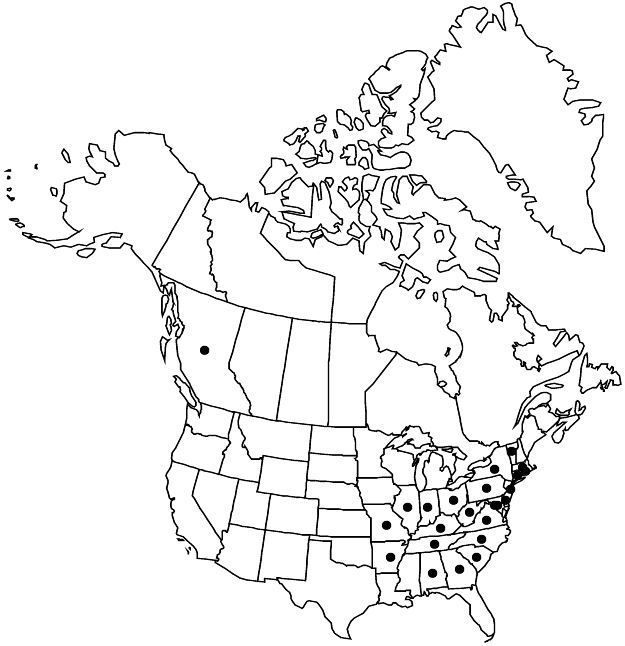Difference between revisions of "Rubus phoenicolasius"
Bull. Acad. Imp. Sci. Saint-Pétersbourg 17: 160. 1872.
FNA>Volume Importer |
FNA>Volume Importer |
(No difference)
| |
Revision as of 23:13, 16 December 2019
Shrubs, 10–20(–30) dm, armed. Stems biennial, arching, sparsely to moderately hairy, long-stipitate-glandular, not pruinose; prickles sparse to dense, erect to hooked, slender, 2–8(–10) mm, slender-based; bristles dense, 2–6 mm, usually gland-tipped and reddish purple, glands ellipsoid to narrowly cup-shaped. Leaves deciduous, ternate; stipules filiform, 5–12 mm; terminal leaflets broadly deltate or ovate to suborbiculate, 4–15 × 3.5–14 cm, base truncate, rounded, or shallowly cordate, unlobed or dentate to shallowly, sharply or bluntly 3-lobed, margins coarsely serrate or doubly serrate, apex acute to acuminate, abaxial surfaces with scattered, erect to curved prickles on moderate- to large-sized veins, densely white-hairy, moderately to densely long-stipitate-glandular along veins. Inflorescences terminal and axillary, 5–30-flowered, cymiform to racemiform. Pedicels usually unarmed or prickles sparse, erect, moderately to densely hairy, densely long-stipitate-glandular. Flowers bisexual; petals white to pink, ovate to suborbiculate, 4–6 mm; filaments laminar; ovaries glabrous. Fruits red to maroon, globose, 1–1.5 cm; drupelets 15–40, strongly coherent, separating from torus. 2n = 14.
Phenology: Flowering May–Jul.
Habitat: Woodlands, roadsides, disturbed open areas, moist soil
Elevation: 0–1200 m
Distribution

B.C., Ala., Ark., Conn., Del., D.C., Ga., Ill., Ind., Ky., Md., Mass., Mo., N.J., N.Y., N.C., Ohio, Pa., R.I., S.C., Tenn., Vt., Va., W.Va., e Asia (China, Japan, Korea).
Discussion
Rubus phoenicolasius was introduced to North America for edible fruit, breeding stock, and for ornament. Attractive for its typically reddish purple glandular hairs, R. phoenicolasius nonetheless can be invasive.
Selected References
None.